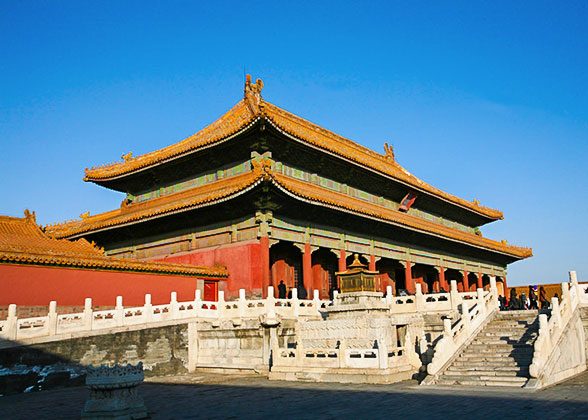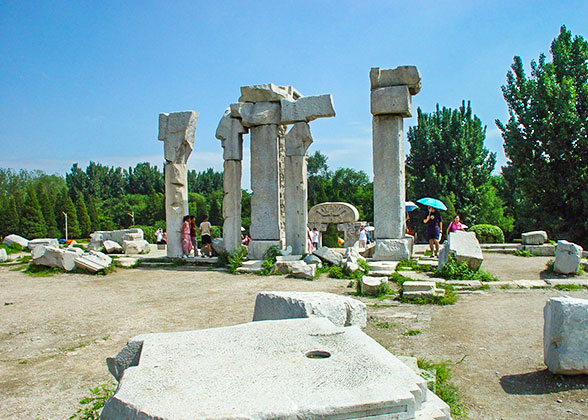Beijing is one of the four ancient cities of China (together with Xi'an, Luoyang, Nanjing), the best preserved, and famous around the world. The city is also known as a cradle of humanity. As early as 700,000 years ago, Peking Man lived in Zhoukoudian area of this city.
Beijing City was established over 3,000 years ago and was called Jin City in the Western Zhou Dynasty (11th century BC - 771 BC). Ever since Emperor Qin united China in 221 BC, Beijing has played an important role in north China. It was the capital city in the Liao (916-1125), Jin (1115-1234), Yuan (1271-1368), Ming (1368-1644) and Qing (1644-1911) dynasties. During these 800 years, 34 emperors lived and ruled here. The world renowned Forbidden City was built during this period.
At the end of the Qing Dynasty, World War I broke out. Beijing became the focus of the war, which disrupted the society. Many residences of royal families were robbed and burned down. After that, the whole country was reduced to the status of semi-colonial and semi-feudal society. It wasn't until October 1st 1949 that the People's Republic of China was founded. Beijing is known as the capital city of the prosperous new country which has flared into importance in Asia.
 | | Forbidden City | |  | | Old Summer Palace | |
Here is a snapshot of the major events in the history of the city:
| Time | Used Name | Event |
| 1045BC (Western Zhou) | Jin City | Pioneer city of China |
| 226BC (Qin Dynasty) | Jin City | Emperor Qin attacked Jin successfully |
| 581-618 (Sui Dynasty) | Zhuo Shire | Population over 130,000 |
| 618-907 (Tang Dynasty) | Youzhou | Military center and business center |
| 916-1125 (Liao Dynasty) | Nanjing | As accompanying capital (now in Xicheng District) |
| 1153 (Jin Dynasty) | Zhongdu | Occupied by a minority group in northeast China |
| 1215 (Yuan Dynasty) | Yanjing | Occupied by Mongolia leader Genghis khan |
| 1272 (Yuan Dynasty) | Dadu | As capital city of a united country for the first time |
| 1368 (Ming Dynasty) | Beiping | Ming Dynasty established |
| 1403 (Ming Dynasty) | Beijing | Emperor Yongle changed the name to Beijing |
| 1406 (Ming Dynasty) | Began to built Forbidden City |
| 1421 (Ming Dynasty) | Move to new site (now in City center) |
| 1564 (Ming Dynasty) | Central part of the city now has formed |
| 1644 (Qing Dynasty) | Qing Dynasty established |
| 1860 (Qing Dynasty) | Old Summer Palace (Yuanmingyuan) was burnt down by invaders |
| 1900 (Qing Dynasty) | Eight-nation Allied Forces occupied this city |
| 1912 (Qing Dynasty) | Last emperor Puyi was forced to abdicate the crown |
| 1937 | War of Resistance against Japan broke out |
| 1945 | Beiping | Civil war between two fictions broke out |
| 1949 | Beijing | The People's Republic of China was founded |
 2008 Olympic Games
2008 Olympic Games
- Last updated on Aug. 29, 2024 by Gabby Li -

